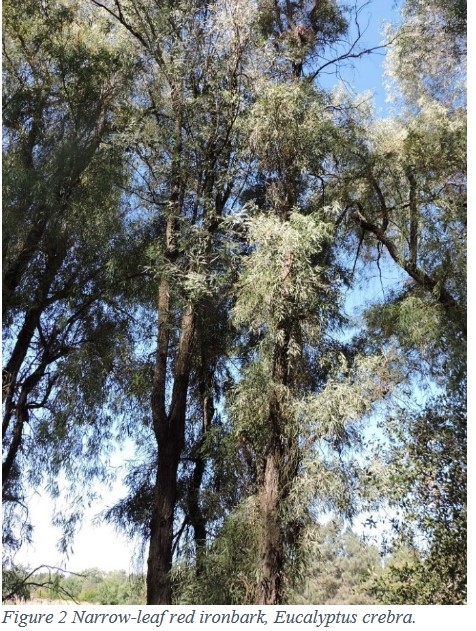Maybe eucalyptus?
So you thought there were only three species of eucalyptus? Well there are a lot more and they all grow differently. Here's an interesting study evaluating their performance in the Central Valley which probably has value along coastal Southern California, as well.
https://www.nrcs.usda.gov/plantmaterials/capmctn13794.pdf
Eucalyptus species were introduced to California and extensively planted, initially for timber and
later as windbreaks and ornamental trees. The Lockeford
Plant Materials Center (CAPMC) as part of the NRCS Plant Materials Program carries out
systematic evaluations of plant materials for conservation use. In 1984, eucalyptus germplasm
sourced from Australia was planted at the CAPMC to evaluate growth rate, drought tolerance
and assess the suitability of eucalyptus species to function as windbreaks in the southern Central
The eucalyptus genus includes around 700 species, most of which are native to Australia. Their resilience and drought tolerance have resulted in extensive plantings around the globe, primarily for timber, but also as shade and windbreak trees . Since 1860, when eucalyptus seedlings first became available for planting in California, they have become the most common non-native tree in the state. Eucalyptus stands are associated with negative attributes including poor habitat for wildlife, allelopathic suppression of plants, high combustibility, and for some species the likelihood of dropping branches unexpectedly or blowing over in high wind events. A positive exception is sites, primarily of blue gum (E. globulus), along the Pacific Coast, which are important overwintering sites for the monarch butterfly (Danaus plexippus); although the butterflies prefer native trees. Several species of eucalyptus are recognized as naturalized in California with the ability to regenerate from seed. Currently, two species of eucalyptus, river red gum (Figure 2) and blue gum, are listed as invasive with limited potential by the California Invasive Plant Council (2020), while a third, sugar gum (E. cladocalyx) is listed in the “watch category.
Suitable windbreak trees have a preferred growth habit of a columnar form and one to several trunks, with rapid growth in the first few years. Data on the best adapted eucalyptus species was first collected in 1990 after six years of growth. An evaluation of the 34-year-old planting provides further information on long-term survival of these species in the Central Valley. The objective of this publication is to provide a short list of fast growing, non-weedy, long lived eucalyptus species that are adapted and would be suitable for further testing in windbreaks
Five eucalyptus species were identified for further evaluation as windbreak candidates based
upon survival 34 years after planting. The five species are narrowleaf red ironbark, black box,
gray ironbark, red iron bark and black sally.
